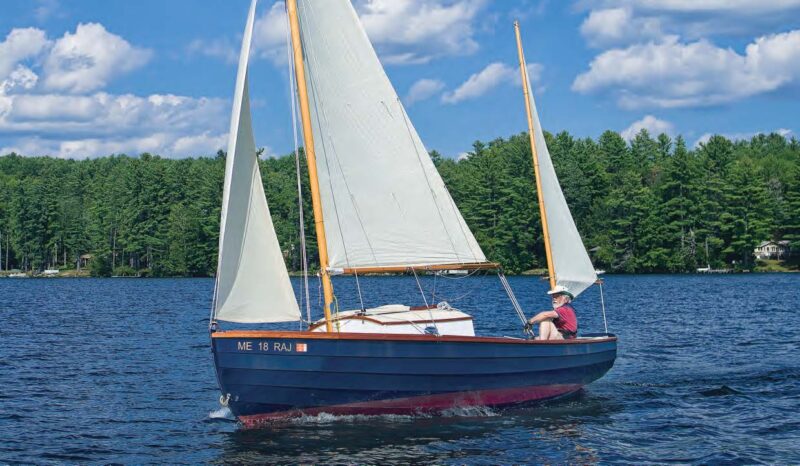 Steve Traficonte
Steve TraficonteLEILU, the first boat completed to François Vivier’s Jewell design, promises both excellent daysailing and the possibility for adventures, all in a cruising sailboat under 20’ long.
Striking a balance between seaworthiness and ease of use in a small craft can be challenging. A too-small cabin can be claustrophobic, but a hull designed around a comfortable interior can be ungainly. Too large a boat can overpower a vehicle’s towing capability; too small, its usefulness may be limited. Too tall, a rig is hard to set up; too short, the boat’s performance may be a continual frustration. With Jewell, however, French naval architect François Vivier seems to have struck an impeccable balance.
Vivier worked up the design in consultation with Clint Chase, a boatbuilder of Portland, Maine, who relayed what people were telling him they were looking for in a boat. The U.S. kits are CNC-cut by Hewes & Company of Blue Hill, Maine. As of this writing, a single hull had been completed to the new design, and another was close to launching in Switzerland.
Frank Kieliszek of Norway Lake, Maine, owns the first completed Jewell, which he named LEILU. Rather than building it himself, he sought economy by buying a boat kit and a quick completion by having it constructed by French & Webb of Belfast, Maine. It was an unusual project for a company known for its fine custom yacht construction.
Vivier’s thorough designs are conceived with amateur builders in mind, and the computer-cut kits are meant to simplify and hasten the all-plywood construction. The hull is glued-lapstrake, using 9mm okoume plywood over an egg-crate-style structure of interlocked bulkheads and stringers, all epoxy-filleted. She has a box keel that contains the ballast and also makes her readily trailerable.
Kieleszek wanted a boat finished to high standards, but he’s more interested in sailing than construction. The French & Webb builders report that the kit went together easily, even though Vivier hadn’t finalized the instructions at the time. “I think they were pleased,” Kieleszek said. “The pieces that come precut, the CNC pieces, fit amazingly well. They had some little things they would do differently,” but overall the problems were few. LEILU launched in August 2013.
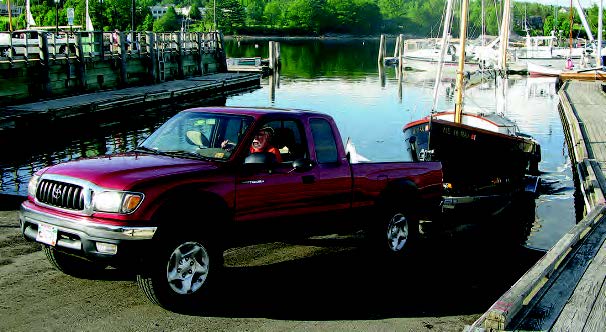 Tom Jackson
Tom JacksonUnassisted, owner Frank Kieleszek winched LEILU onto the trailer rollers with ease, and his six-cylinder pickup provides ample towing power on the road and the ramp.
Kieleszek lives year-round at the head of a five-mile-long lake, and LEILU stands ready at the end of a small dock. “When I come home from work, the boat is already rigged, so we just hoist sail and push off,” he said. He had small sailboats before, most notably a Flying Scot—but he wanted something safe, stable, and not requiring as much athleticism to sail. Kieleszek also wanted a boat that he could transport to salt water for exploring and weekend cruises among Maine’s alluring islands. He saw a presentation that Chase made at the Small Reach Regatta one year about sailing with Vivier in France. He started visiting websites regularly. When he saw the Jewell design, all the pieces fi t together.
For Kieleszek, LEILU has lived up to her promise. Joining him in Belfast Harbor for a daysail, I came to appreciate the boat’s qualities as well. Small-boat cruisers have a long list of things they look for in a boat, and I can’t think of any criterion that this design fails to meet. And it meets them all with style.
The boat is a centerboarder rigged as a gaff-headed yawl, in Vivier’s words, “firstly because it is beautiful, and also because Americans are fond of yawls.” She has a roller-furling jib whose tack attaches to a stemhead fitting, without the need of a bowsprit. The high-peaked gaff mainsail sets easily, reefs easily, and provides ample power. The triangular, sprit-boomed mizzen sheets to a pole boomkin that is easily removed for trailering.
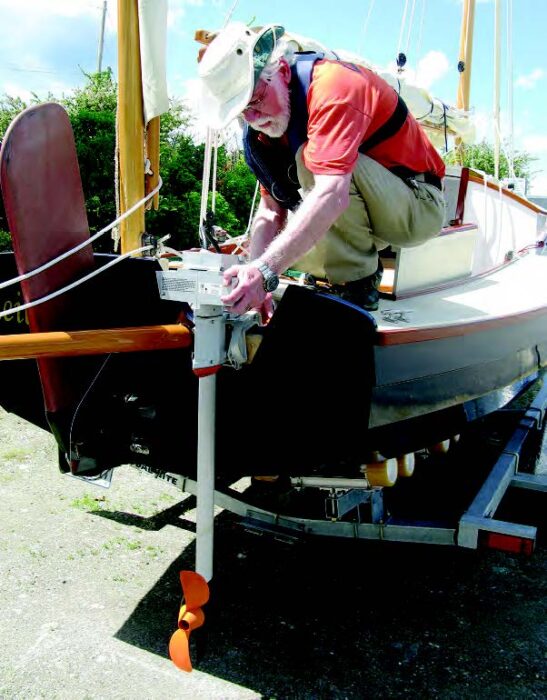 Tom Jackson
Tom JacksonA Torqeedo electric outboard, with a built-in battery pack, stows in a cockpit locker and slips easily into place. Once the boat is rigged and the outboard and the rudder are kicked up, the boat is ready to back down the ramp.
Yawls with outboard rudders present one difficulty: steering often calls for either an offset mizzenmast or elaborate mechanisms to get around the mast to the rudderhead. Vivier’s response was to step the mast through the short afterdeck into a fitting and a step mounted on the inboard face of the transom. The S-shaped tiller passes under the afterdeck and through a transom aperture below the step. The aperture is far enough down to give the mizzenmast sufficient “bury,” and a built-in well, much like an outboard motor recess, drains overboard aft to prevent water from coming into the cockpit. By using this simple solution, the mizzen is stepped amidships, where it should be.
Although there is nothing technically difficult about setting up the rig, it takes time, up to two hours. The boat could easily live on its trailer, but this kind of setup and take-down time greatly favors the kind of user who has in mind weekend adventuring over regular daysailing off a trailer. The mast is housed in a stainless-steel, deck-mounted tabernacle, and Kieleszek is able to raise it by himself. The shrouds set easily, using high-tech line through simple deadeyes. The jib attaches simply to the stemhead fitting. Its halyard, which passes through a block at the peak for mechanical advantage when hoisting, leads to a cleat on the cabintop to port of the companionway slider. For the mainsail, the peak and throat halyards, which also reeve through blocks for advantage in hauling, lead to cabintop cleats to starboard. Modern rigging fittings provide appropriate strength, minimal profile, and ease of handling.
With the jib and mizzen rolled up and the main furled, and the permanently placed rudder kicked up to vertical, LEILU launched easily. On retrieval later, I was surprised at how very easily she winched up onto the trailer rollers, and Kieleszek’s six-cylinder pickup hauled her out without a hint of complaint.
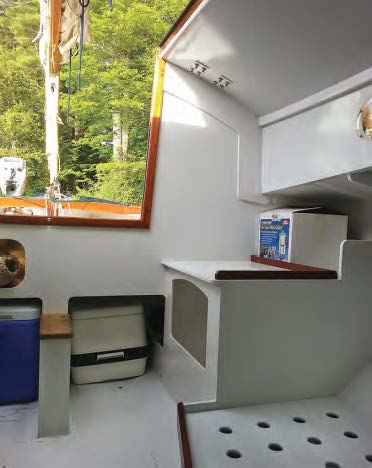 Frank Kieleszek
Frank KieleszekAs a new boat, LEILU doesn’t have much of a “lived in” look. She‘s awaiting, for one thing, her V-berth cushions. A cooler and portable toilet stow under the bridge deck to each side of the centerboard trunk, ready to slide out when needed.
Like many of Vivier’s designs, Jewell has an ample cockpit, much larger than you often see in boats of this length (19’8″). The boat’s width—7′ 3″—accentuates the cockpit’s volume. She feels and handles like a much larger boat. She has side seats aft, with lockers under-neath, and a bridge deck, making a T-shaped cockpit sole that greatly simplifies jib handling while tacking. Seating is comfortable for four or more. The coaming is a comfortable back support but is low enough for side-deck seating when the crew goes to the weather rail. The electric outboard is stowed in the starboard locker. Kieleszek has a model with a removable battery pack at its head, eliminating any need for heavy batteries aboard. The outboard provides a couple of hours of motoring time.
The cabin is also commodious for a boat this size. Chase, who is 6′ 6″ tall, encouraged Vivier to include long bunks. The V-berth layout is practical not only for tall people but for stowage. Compact lockers to port and starboard aft provide accessible stowage and minimalist counter space. The centerboard trunk’s intrusion into the interior is slight, forming a useful step that doubles as a place to sit while slicing salami. Stowage under the bridge deck alongside the center-board trunk easily accommodates a small portable toilet on one side and a cooler to the other, both nicely out of the way when not in use. With the addition of a boom tent to keep the cockpit bug- and rain-free, a couple could easily cruise comfortably for days, yet the boat would be easy to handle solo.
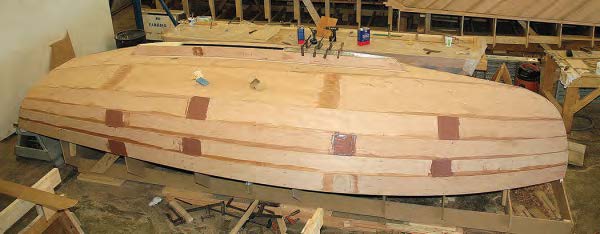 Frank Kieleszek
Frank KieleszekThe first completed Jewell hull was built upside-down over molds and bulkheads at French &
Webb in Belfast, Maine.
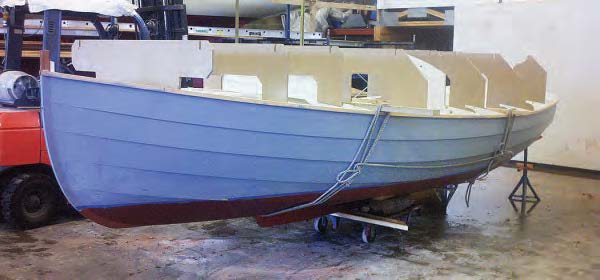 Frank Kieleszek
Frank KieleszekCut by computercontrolled routers at Hewes & Company in Blue Hill, Maine, the kit components came together quickly.
In one spring afternoon sail, Kieleszek and I experienced just about everything. We sailed downwind out of the harbor on a pleasant breeze. However, we could see lines of dark clouds forming, portending gusts. The boat balanced handily and maneuvered through tacks and jibes with ease. At length, we turned windward for the homeward leg, and soon we found it necessary to reef. We hauled the mizzen tight and rolled up the jib so the boat would ride head-to-wind while we cinched up the topping lift to control the boom, eased the main peak and throat halyards together, made off the leech reefing line, got the luff cringle on its hook, and made off the reefing nettles around the loose-footed sail. In no time, we hoisted the main again and rolled out the jib.
After a while, the wind subsided, so we shook out the reef. Before long, a particularly dark line appeared, obviously carrying rain and strong wind. Kieleszek made the wise call to douse the main entirely, and when that strong breeze hit, we sailed very comfortably on the jib and mizzen, a classic yawl strategy for heavy weather. After the squall line passed, we were able to hoist full sail again and sailed back to port on a pleasant breeze under a warming sun.
She handled all of that with grace. I found myself toying with the old ideas: Why not this one? I envisioned her loaded with dry bags and baskets of edibles, outward bound. Her simplicity has a strong appeal. I’ve been an admirer of Vivier’s designs since coming to know them at Raid Sweden in 2005, and periodically I visit his website to daydream about one design or another. There is something about this Jewell design—economical, towable, manageable, “doable”—that has that just-right feel to it.
For information about Jewell and other designs by François Vivier, see his website at www.vivierboats.com. Plans are available from the designer. Kits and completed boats are available in France from Icarai, www.icarai.fr/index-en.html.
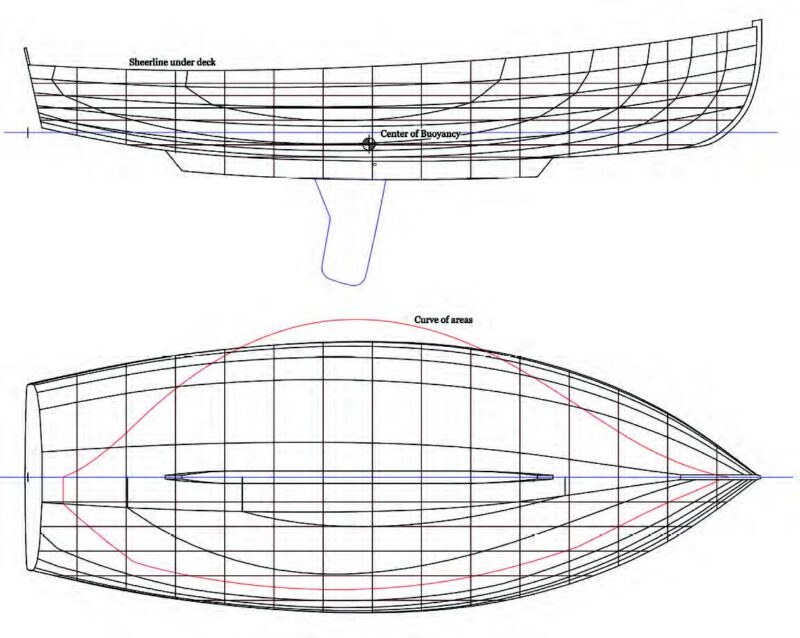 François Vivier
François VivierJewell Particulars
LOA 19′ 8″
LWL 17′ 9″
Beam 7′ 3″
Draft board up 1′ 3″
board down 4′
Displacement 1,367 lbs
Ballast, in keel, 265 lbs
in centerboard 66 lbs
Sail area 237 sq ft
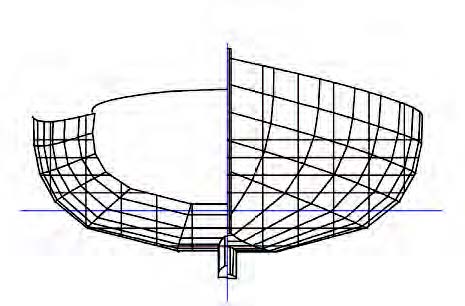 François Vivier
François VivierDesigner François Vivier has developed a number of “randonneurs,”
or trekking boats, over the years. With amateur construction in
mind, he designed Jewell to be relatively simple to build, using
glued-lapstrake plywood construction. The boat is easily trailerable.
Its shoal draft, only 15” with the board up, will allow close
explorations of islands and coastlines, and her broad beam helps
her stay on her feet and also permits relatively generous cockpit and
accommodations for a boat under 20’ long.
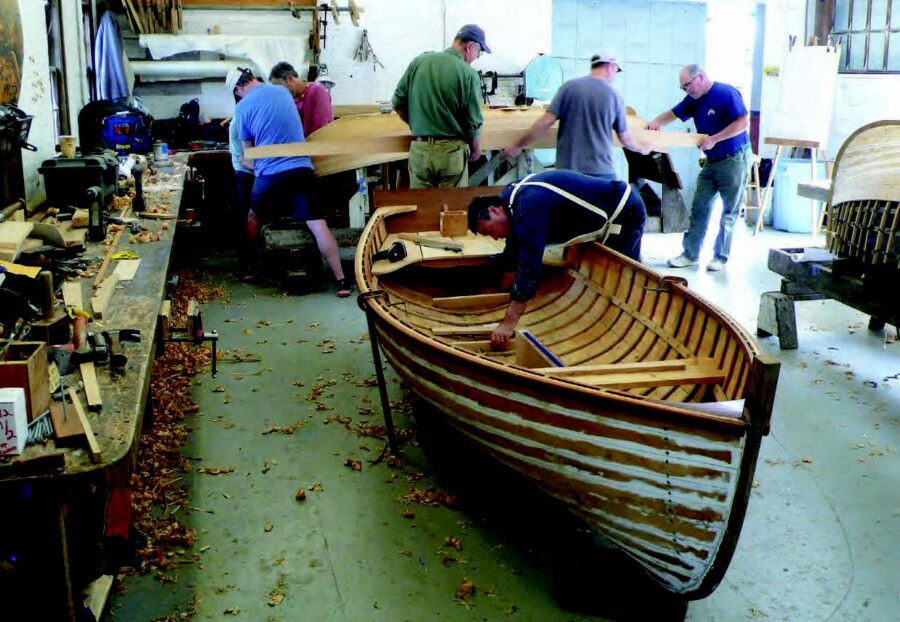
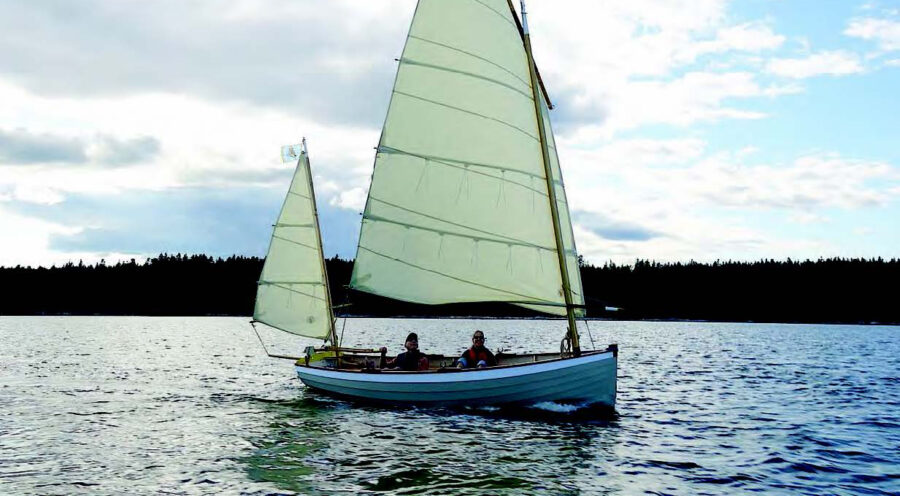
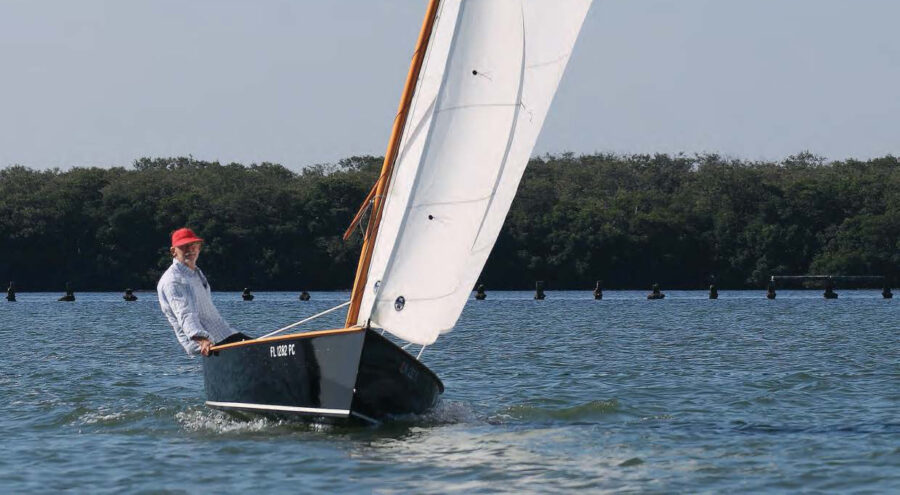
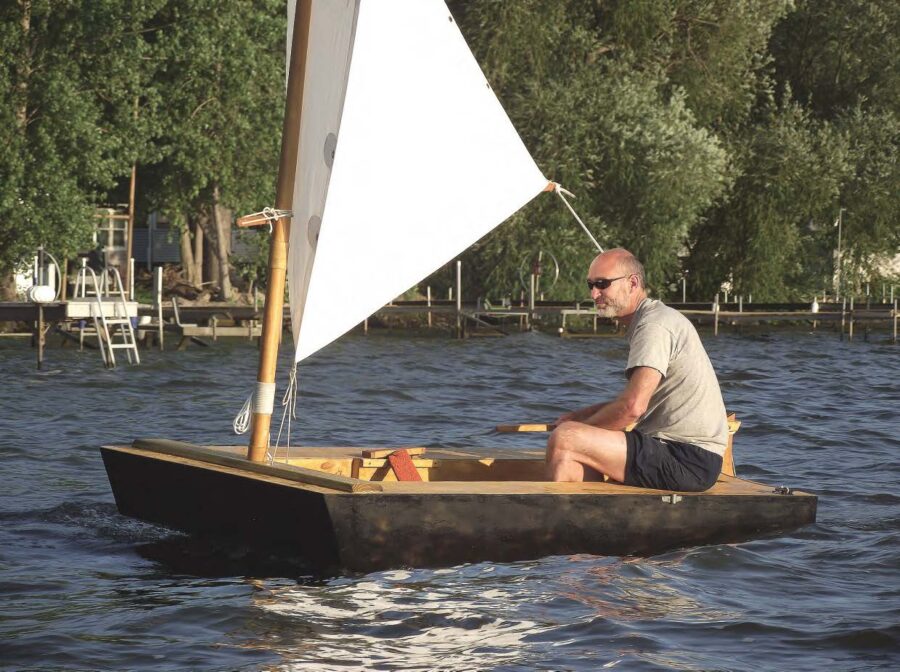
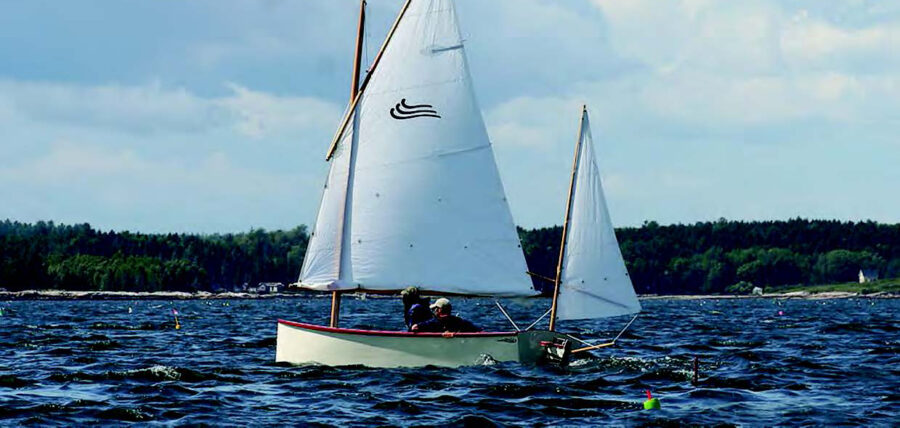
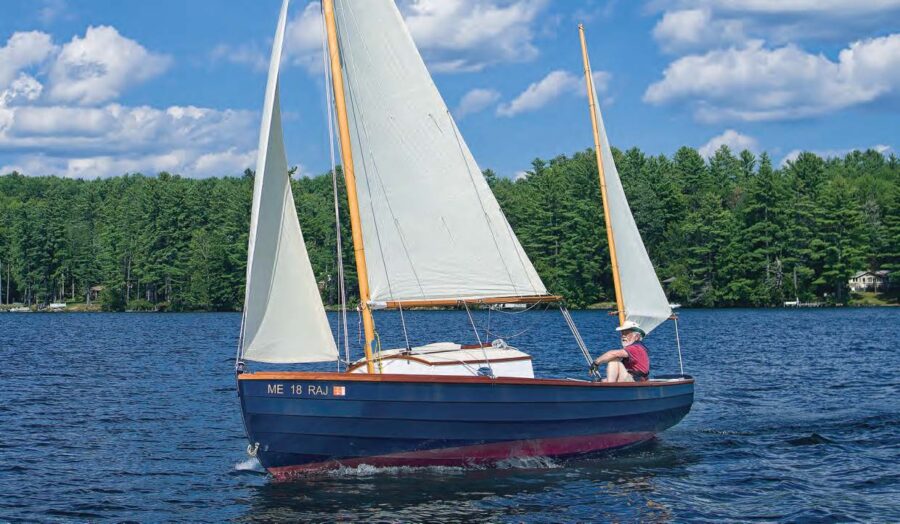
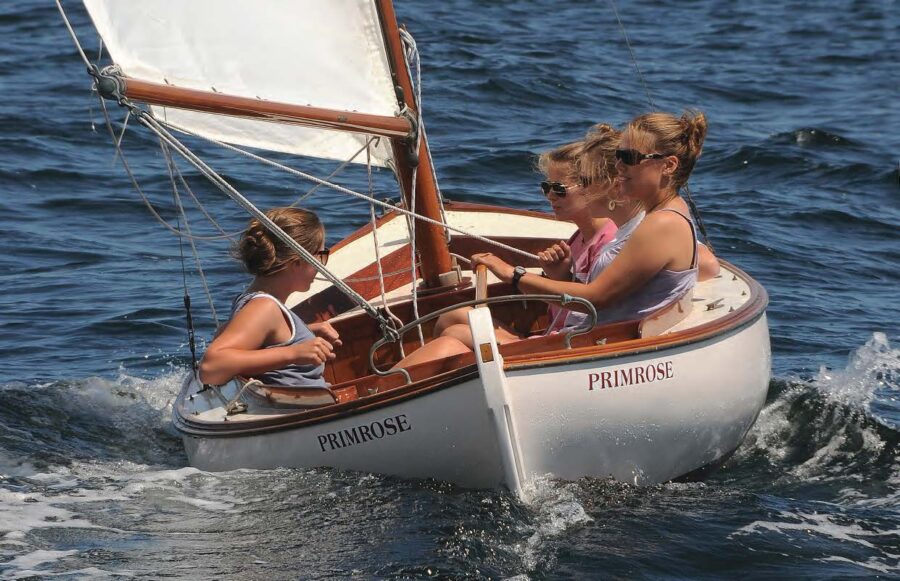
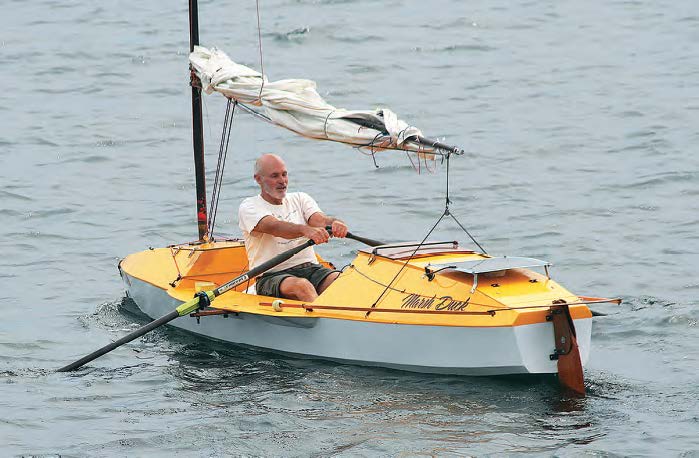
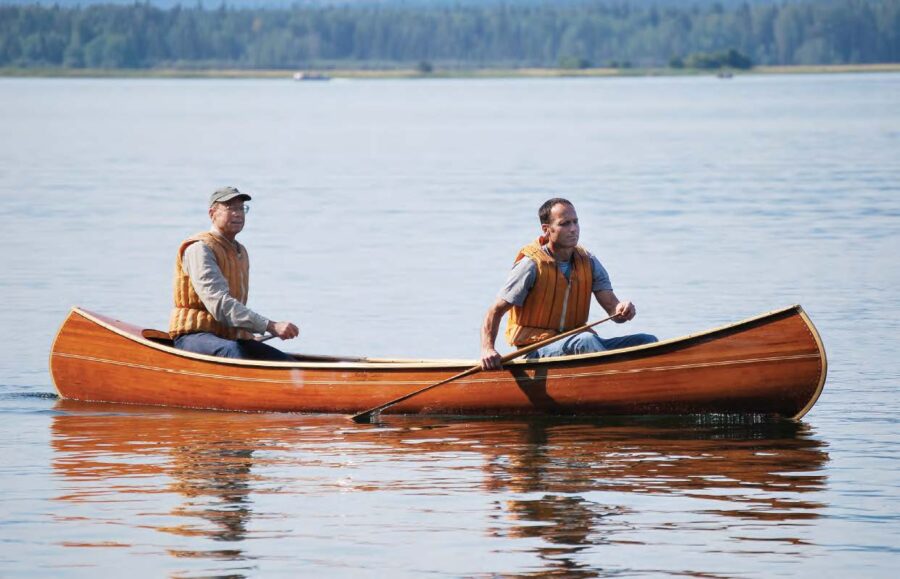
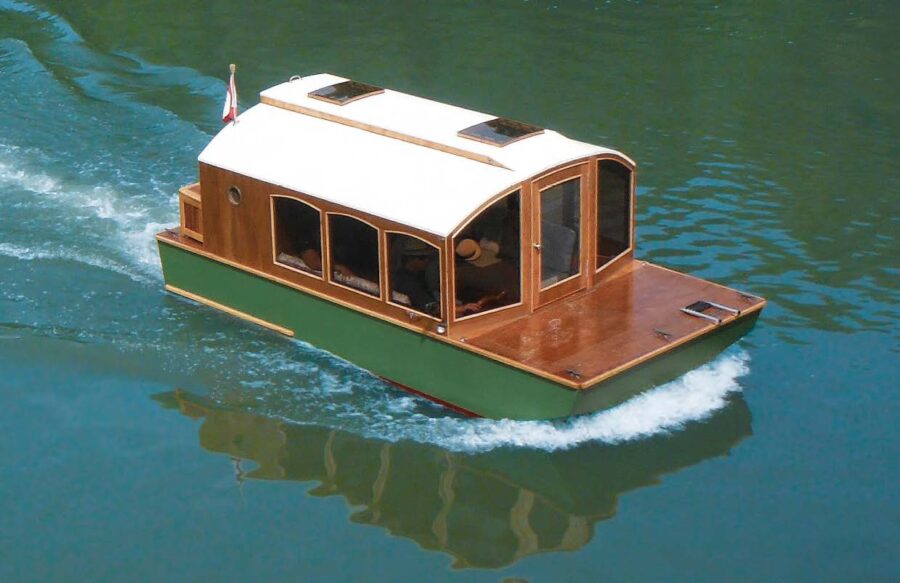
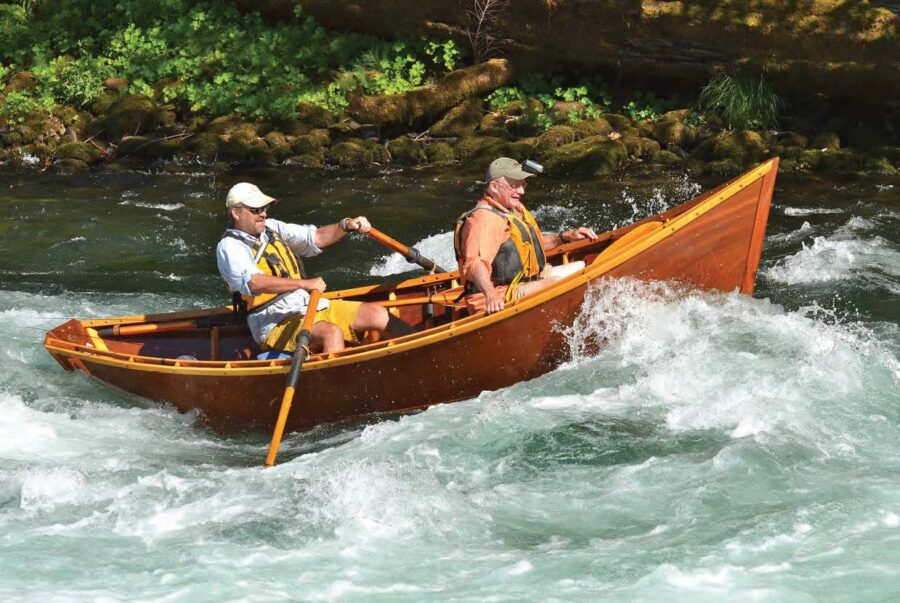
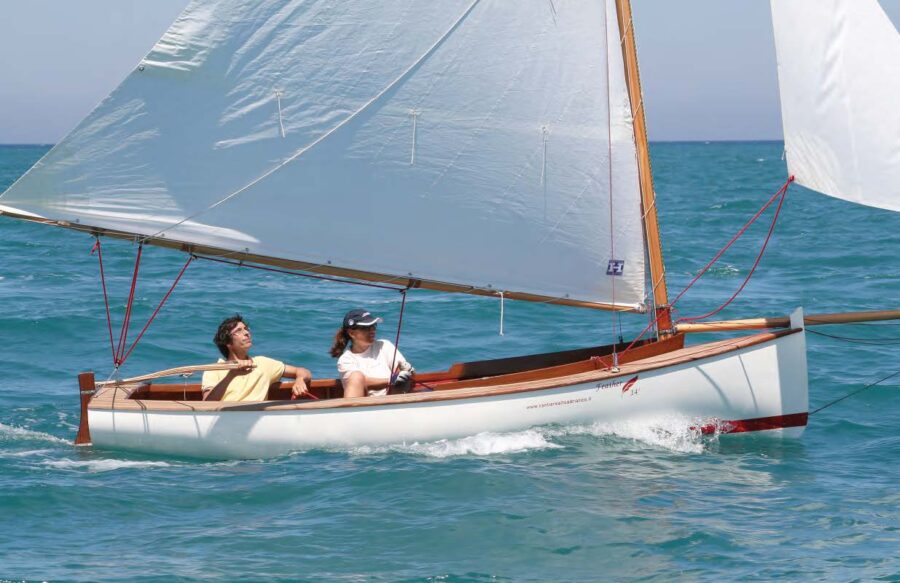
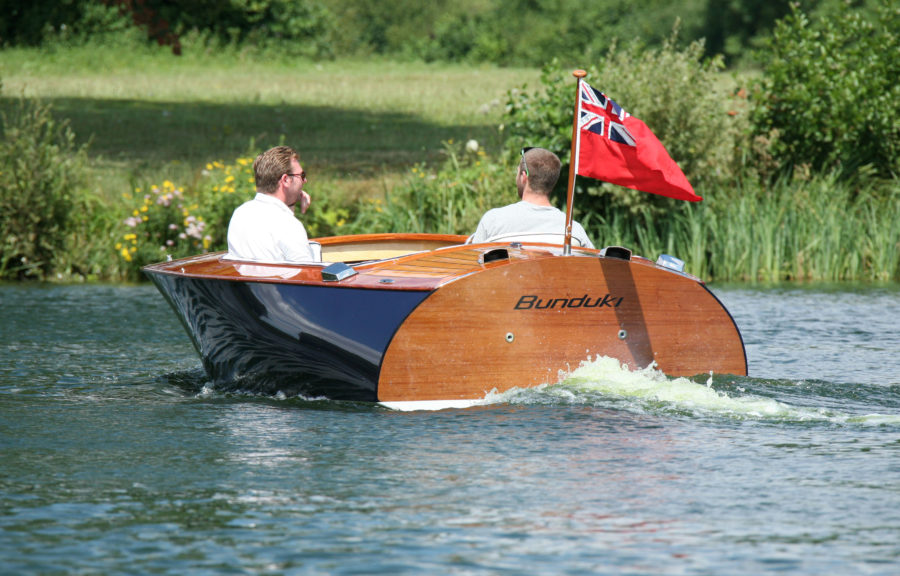
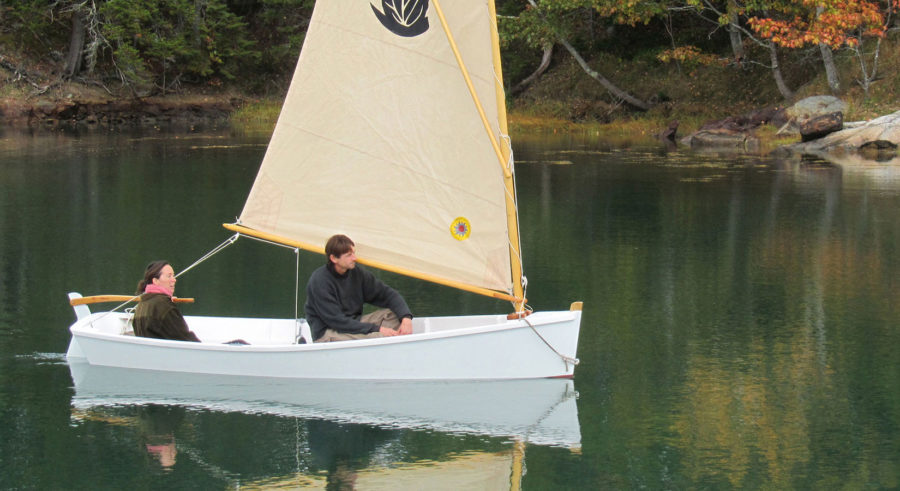
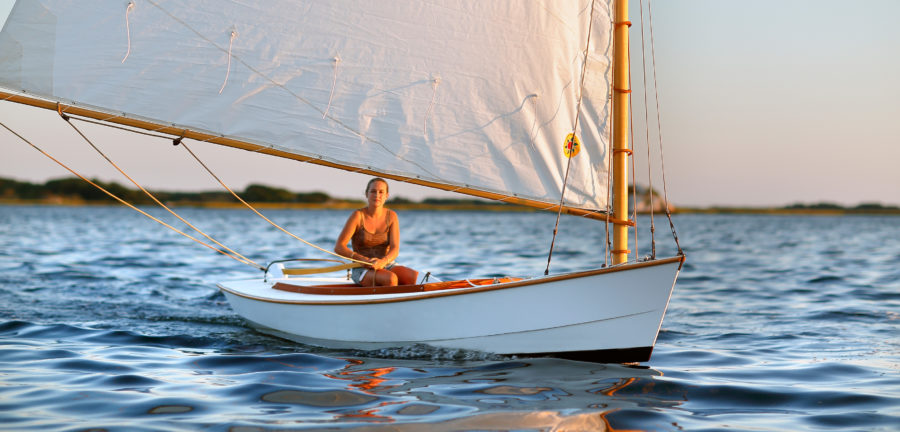
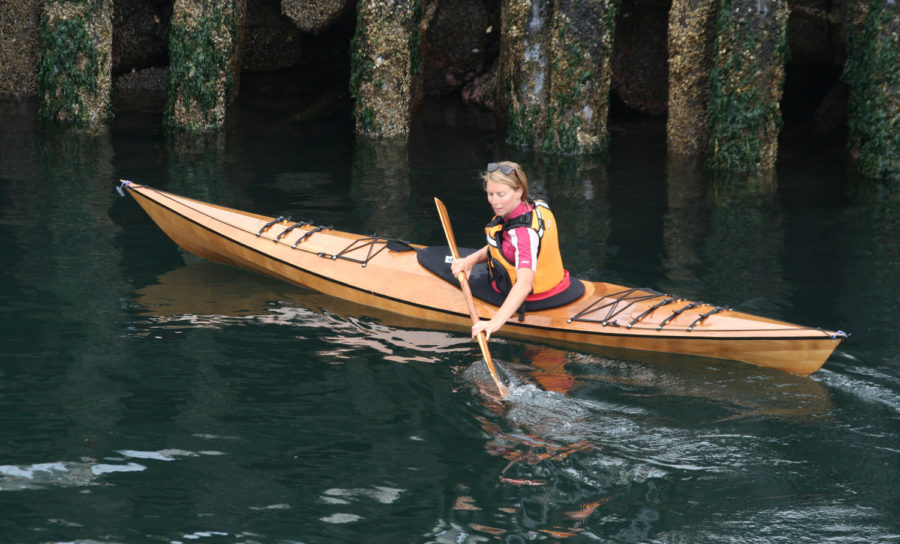
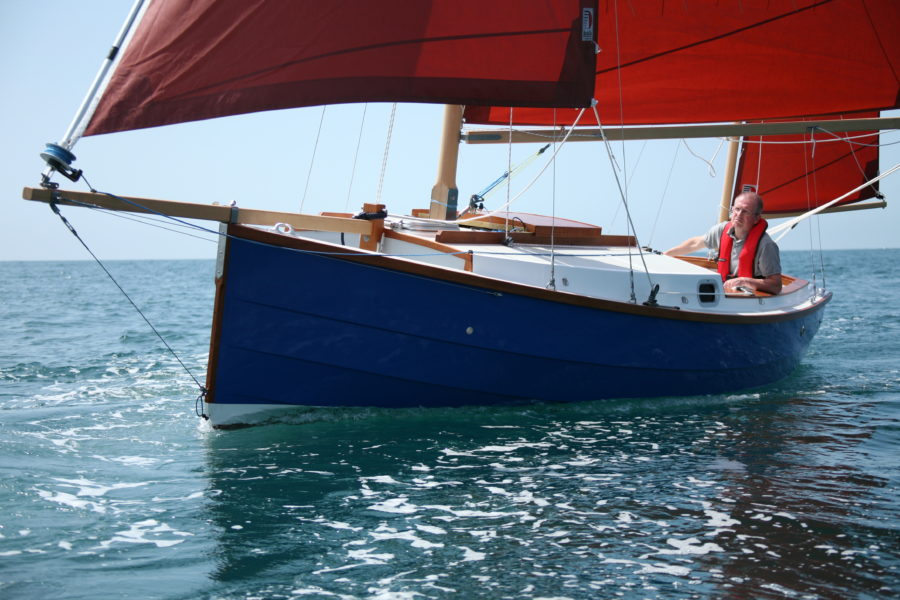
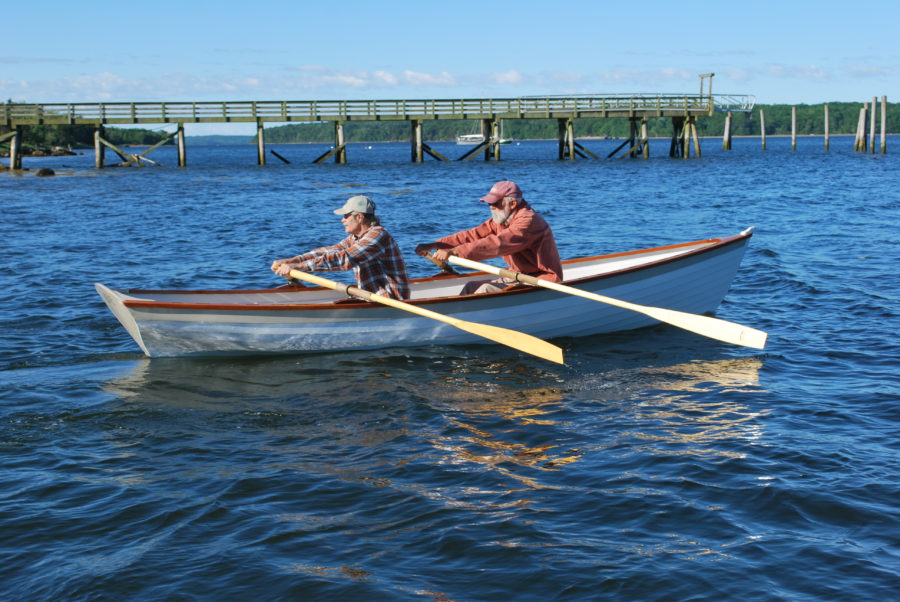
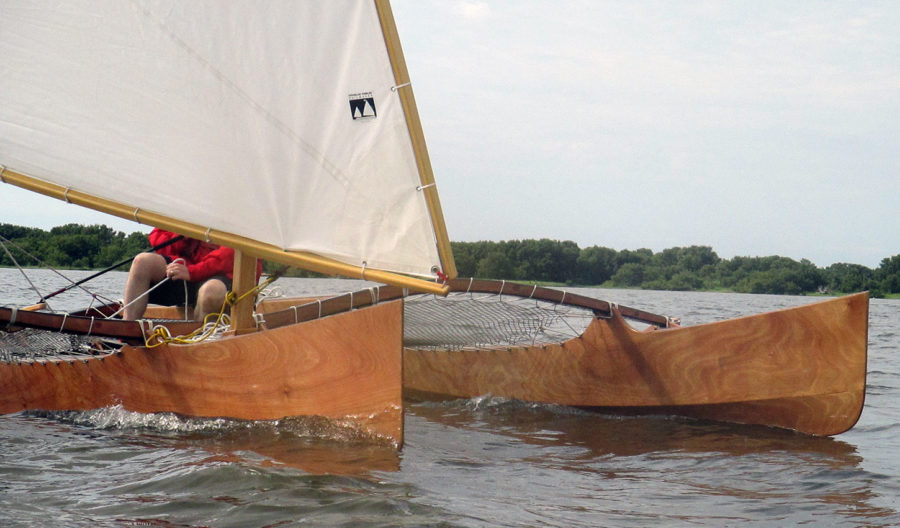
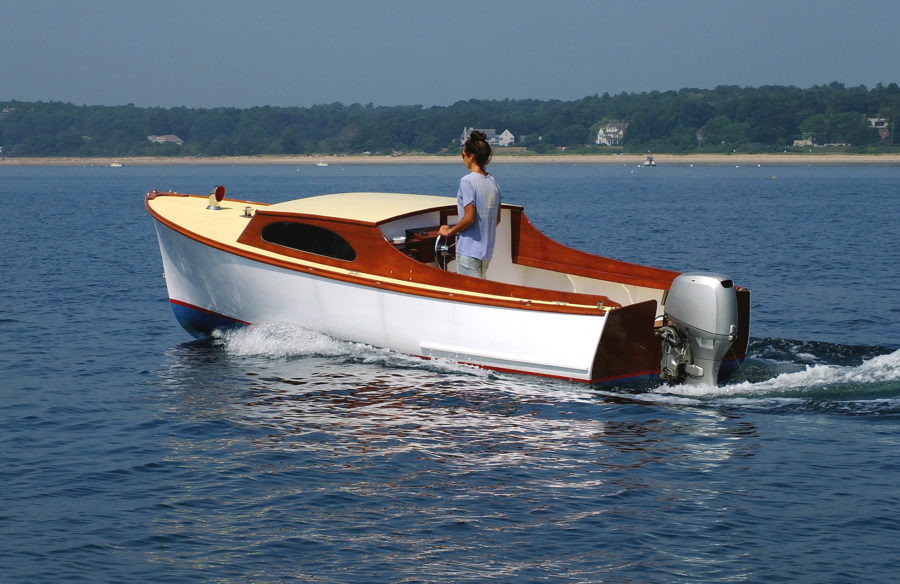
Join The Conversation
We welcome your comments about this article. If you’d like to include a photo or a video with your comment, please email the file or link.